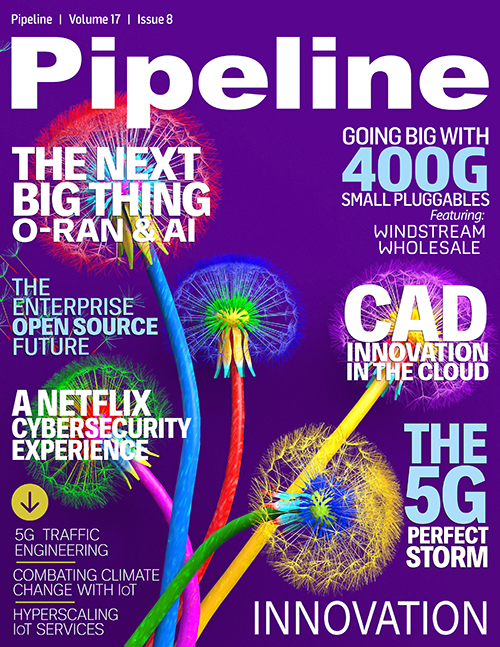Go Small to Go Big with 400 Gig Line Side Pluggables
Bill Gartner, senior vice president of optics and optical at Cisco commented that, “Windstream is one of the first network providers to leverage the full capability of 400G pluggable optics in data center interconnect to metro and long-haul applications. With the emergence of 400G pluggable DWDM optics, we will be able to simplify network design and operations.”
Acacia partnered with Windstream for the 400 ZR+ trials because, according to Tom Williams, VP at Acacia, its leadership “could see a strong technical collaboration between the two companies and
that close working relationship would allow everyone involved to push the upper limits, achieve an important industry milestone efficiently and in a quick timeframe. This level of collaboration
and efficiency is something unique that we haven’t been able to do with anybody else… Windstream allowed us to do something that is really record-breaking in a timeframe that was impressive… This
is the kind of thing we want with all our customer engagements. It’s important for the carriers to know directly what the technology is capable of but also, we need to foster relationships with
carriers to provide valuable feedback into our future development efforts, so we know what carriers really need and we have that direct feedback.
What’s next?
Windstream’s ICON (Intelligent Converged Optical Network) architectural strategy is to leverage the advantages of a disaggregated network architecture with multi-vendor open line system scalability and alien wave support. This disaggregation strategy allows us to ride the technology curve, so we don’t have to overbuild line systems every time there’s a stair-step advance in technology. Being able to use independent components in a multilayer architecture was foundational to incorporating the Acacia Coherent Pluggable modules (quickly and easily) into the production network.According to a recent forecast by Dell'Oro Group, demand for 400G pluggable modules will materialize by late 2021. The company forecasts that the cumulative optical transport market revenue will be nearly $85 billion for the years that include 2021 through 2025. While 100 Gbps coherent wavelengths contributed most of the revenue before, Dell’Oro analysts forecast the largest contributor will be 200 Gbps in the near-term period, and then 400 Gbps in the outer forecast period. In all, 200+ Gbps wavelength shipments are forecasted to grow at a five-year CAGR of 30 percent.
Windstream continues as an early adopter of coherent optical technologies to drive efficient growth and scale of our network and services for our customers. The pluggables allow for different types of deployments that weren’t possible with previous generations of optical technologies. We expect to begin deploying ZR+ coherent pluggable modules in the second half of 2021, a technology that has applicability in as many as 80 percent of our existing links. We also see how 400 Gbps pluggable coherent optics technology will converge with Layer 3 routing as a natural use case for the technology as well as future 800G deployments.
The optical performance results of the trial mark a milestone in optical networking by demonstrating that high-speed optical transmissions, such as 400G and 300G, can be deployed over long distance, high-performance fiber networks using compact pluggable modules.
It’s remarkable that something so small can make such a big impact with efficiencies in power, space, and overall cost.



















